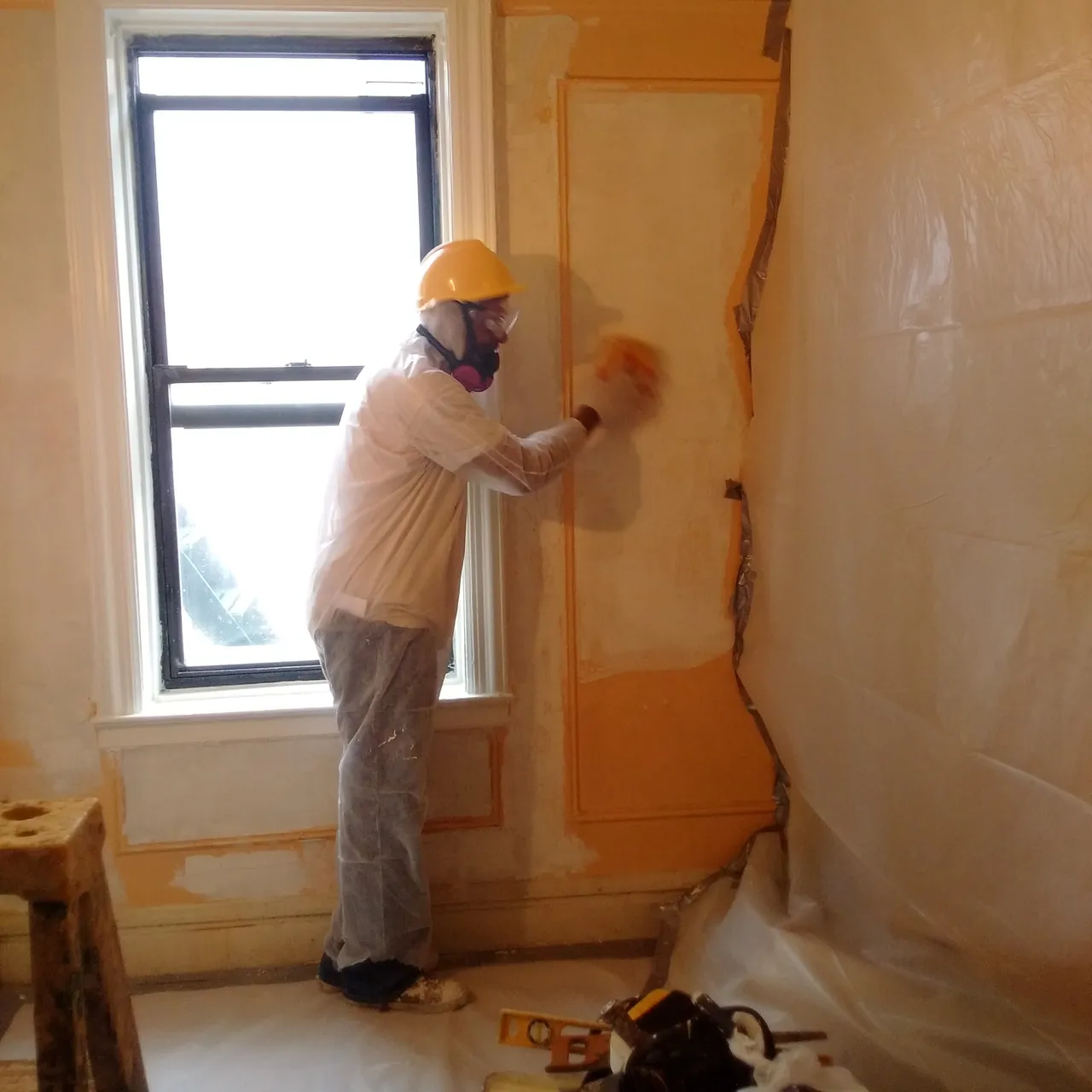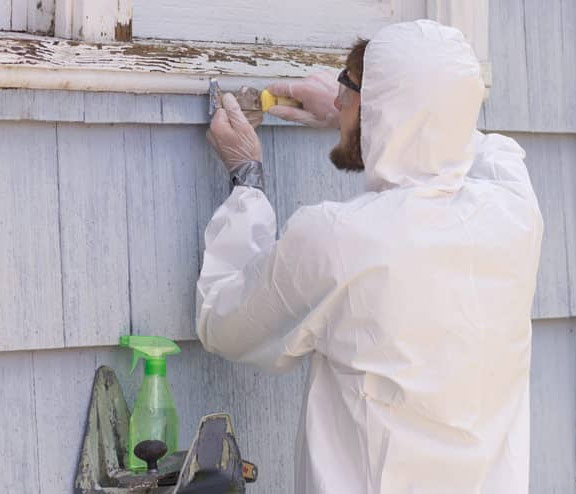Relied On Lead Paint Removal Company-- NYC's Premier Lead Reduction Service
Vital Tools and Approaches for Effective Lead Violation Cleanup
Attending to lead violations efficiently requires a detailed technique that blends the right devices with strategic methodologies. The first step involves outfitting employees with Individual Safety Equipment (PPE) to protect their wellness. Simultaneously, the use of specialized clean-up devices, such as HEPA vacuums and lead-specific cleaner, is important for thorough impurity removal. Effective control approaches, consisting of plastic sheeting and negative atmospheric pressure systems, are vital to avoid the spread of dangerous products. Furthermore, secure disposal methods and stringent adherence to governing guidelines guarantee accountable handling of poisonous waste. What are the nuanced strategies that genuinely make a distinction?
Individual Protective Tools
Individual safety devices (PPE) is an essential part in the effective administration of lead contamination cleaning. PPE offers as an important obstacle, safeguarding employees from the dangerous effects of lead exposure, which can lead to extreme wellness effects. The necessary PPE for lead clean-up consists of respirators, safety clothes, handwear covers, and eye defense. Each kind of devices is especially made to reduce various threats related to lead bits and dust.
Respirators, particularly those equipped with HEPA filters, are important for filtering airborne lead bits, protecting against inhalation. Protective clothes, including coveralls and non reusable fits, prevents lead dust from adhering to employees' garments, reducing the danger of second contamination.
Moreover, extensive training on the proper use and maintenance of PPE is essential. Workers need to be enlightened on donning and doffing treatments to stay clear of contamination. Normal inspections and replacements of PPE parts are needed to preserve their safety capacities, guaranteeing a secure and certified cleaning procedure.
Specialized Clean-up Devices

One more crucial tool is the wet/dry vacuum, which can properly tidy up both dust and fluid impurities. These vacuums typically feature HEPA filters to provide an extra layer of safety and security. Wet wipes or tack fabrics are additionally crucial for surface cleaning; they are especially made to capture and hold lead particles, minimizing the threat of spreading out contamination.
For even more stubborn deposits, specialized lead-removal cleaning agents are needed. These agents are developed to damage down lead fragments, making them less complicated to get rid of. Scrub brushes with sturdy bristles can aid in this process, especially on rough surfaces where lead dust tends to adhere much more strongly.
Furthermore, encapsulants are utilized to seal lead-contaminated surfaces, avoiding the release of lead dust. These specialized paints and coverings are developed to abide by various substrates, supplying a lasting option for lead containment.
Reliable Containment Techniques
Efficient control techniques are important in mitigating the spread of lead contamination throughout clean-up tasks. Carrying out robust control techniques ensures that lead bits do not migrate to untouched areas, consequently safeguarding both employees and the atmosphere (DOH & HPD Lead Violation Removal NYC).

To enhance control, encapsulants can be applied to surface areas that are not being eliminated or interrupted. These specialized finishes bind lead dust, minimizing its availability for resuspension. In see this site addition, all workers have to use ideal Personal Safety Equipment (PPE), consisting of respirators and disposable fits, to avoid contamination spread.
Safe Disposal Practices
Making certain risk-free disposal techniques is an important part in the management of lead contamination cleanup. Appropriate disposal minimizes the threat of lead re-entering the atmosphere and threatening public health (DOH & HPD Lead Violation Removal NYC).
Moving lead waste calls for adherence to stringent standards. Making use of qualified hazardous waste carriers ensures that the materials are dealt with properly. Paperwork, click here to find out more consisting of materializes outlining the kind and amount of waste, must come with deliveries to track the waste from the website of beginning to its last disposal destination.
Designated contaminated materials disposal facilities are furnished to handle lead-contaminated materials safely. These facilities usually employ innovative approaches such as stablizing, solidification, or chemical therapy to reduce the effects of the lead before disposal. Landfilling in specialized, lined areas that avoid leachate from contaminating groundwater is an usual practice for last disposal.
Normal training for employees associated with lead waste disposal is important to maintain safety and security criteria and prevent unexpected exposure. By adhering to these methods, organizations can significantly reduce the ecological and health and wellness impacts linked with lead contamination.
Regulatory Conformity Tips

Following regulatory conformity is critical in the effective execution of lead contamination cleaning. Recognizing and complying with federal, state, and regional policies makes certain not only the safety and security and health and wellness of people however also the lawful and financial wellness of the cleanup organization. The Environmental Protection Company (EPA) establishes rigid standards, such as the Lead Improvement, Repair Work, and Paint (RRP) Rule, which mandates appropriate certification and training for specialists handling lead-based tasks.
Compliance begins with a complete analysis of applicable legislations and guidelines. Organizations has to stay upgraded on any legislative modifications, which can be promoted via routine training look at here now sessions and subscribing to industry updates. Paperwork is one more important conformity facet; keeping detailed documents of all activities, including evaluation reports, worker training logs, and disposal materializes, is necessary.
Additionally, engaging with accredited lead examiners or run the risk of assessors makes certain that lead threats are appropriately recognized and alleviated. Companies should implement making use of Individual Protective Equipment (PPE) and guarantee that safety protocols are purely adhered to. Last but not least, clear communication with stakeholders, including employees, customers, and regulative bodies, will foster a society of conformity and responsibility, eventually adding to a more secure and extra effective lead cleanup procedure.
Conclusion
Reliable lead infraction cleanup necessitates the combination of specialized tools and calculated techniques to ensure safety and security and efficiency. Making use of HEPA vacuum cleaners, specialized cleaning up agents, and reliable containment approaches such as plastic sheeting and adverse atmospheric pressure systems is important. Individual protective tools (PPE) safeguards workers from direct exposure, while safe disposal practices and stringent adherence to regulatory compliance are essential for responsibly taking care of contaminated materials. Jointly, these measures significantly minimize health dangers and add to a cleaner atmosphere.